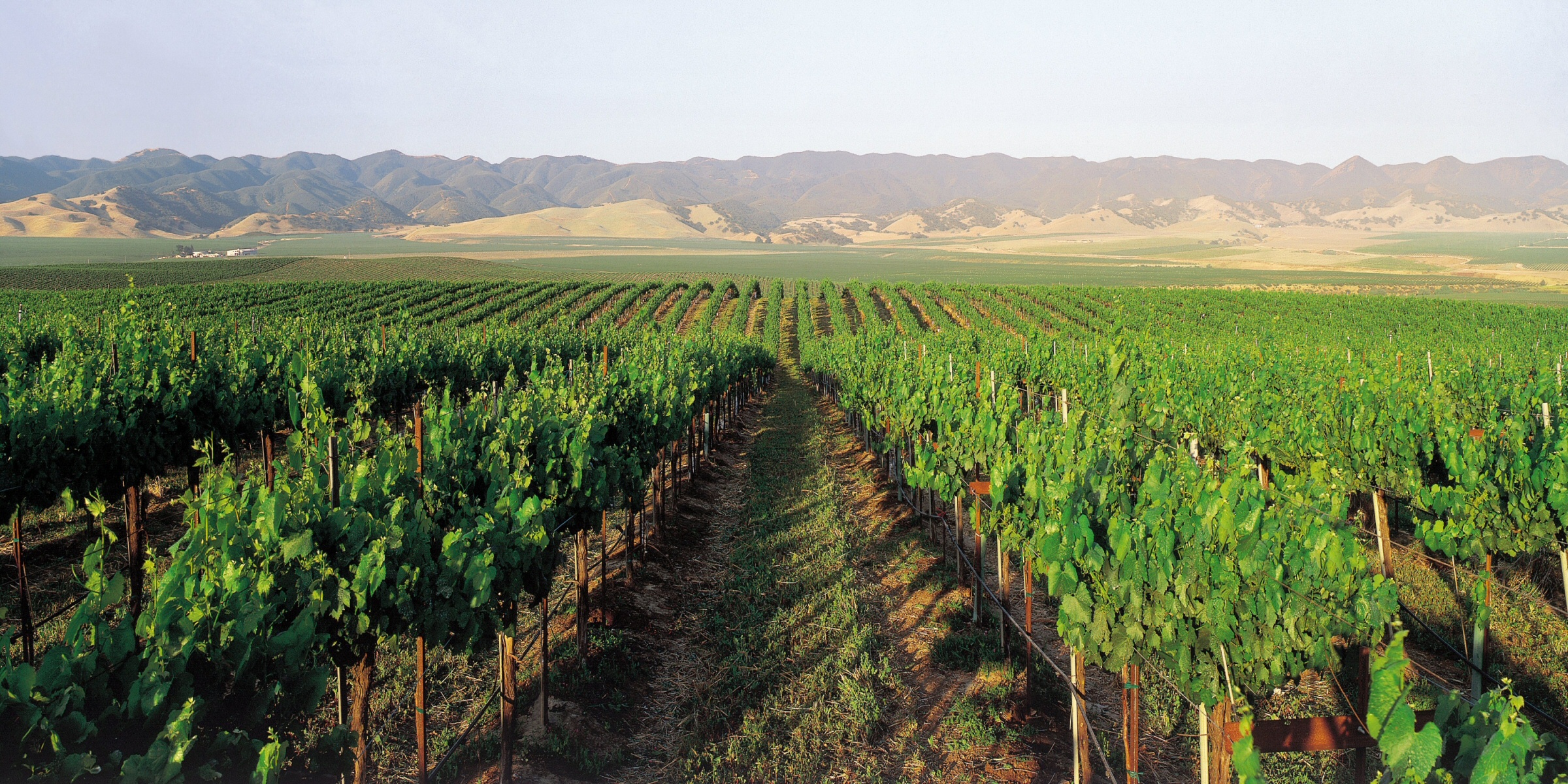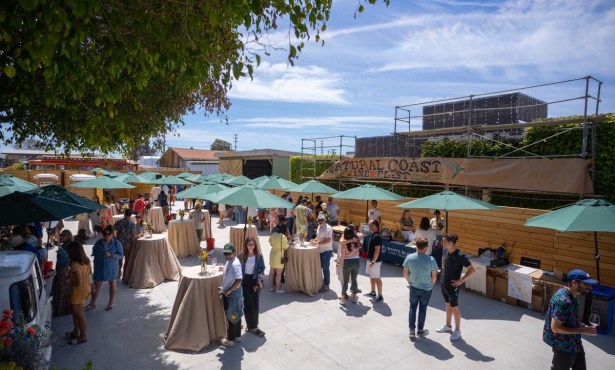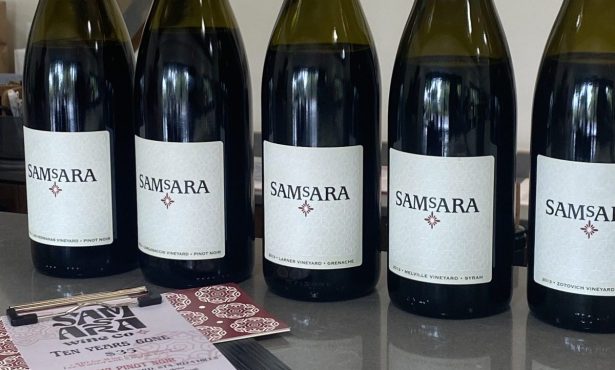Would New Fee Empower Wine Country Marketing Efforts?
Santa Barbara Vintners Considering Mandatory Two Percent Markup on Every Bottle Sold

Should Santa Barbara County wineries impose a two percent fee on each bottle sold to help pay for regional marketing efforts? The staff and board members of the Santa Barbara Vintners certainly believe so. They and a growing number of vintners think this could be a silver-bullet solution to becoming more competitive in attracting visitors and selling wine in an increasingly crowded domestic wine marketplace.
So, they’re waging an informational campaign to convince a majority of the county’s winemakers to support the creation of a business improvement district, or BID, that would levy and collect this fee. The two percent fee would generate more than $1.6 million annually, nearly quadrupling the Santa Barbara Vintners’ existing budget.
Many vintners, however, remain unconvinced that this is the right move for the region, worried that the fee, which is being perceived as a new tax, will raise prices for the consumer and cause unnecessary divisions within the community. They’re also leery of throwing money at a situation that does not yet have a clear marketing strategy. And in a region built on hard-fought, scrappy, and fiercely independent winemakers, some worry that broad-based marketing efforts won’t benefit their unique operations anyway.
Here’s a breakdown of the situation.
What’s the problem?
Despite making some of the best wine in the world, Santa Barbara County’s visitation pales in comparison to places such as Paso Robles, Temecula, Sonoma, and Napa. Those places are powered by popular vintners associations that command higher dues and yet gain more participation than Santa Barbara. They use that money to advertise, connect with journalists, lobby in favor of the industry, and otherwise raise the profile of their regions.
Attracting and retaining members has long been a challenge in Santa Barbara, where just over a third of the estimated 300-plus wineries are paying members of the organization. According to the Santa Barbara Vintners, theirs is the only 100 percent membership-supported vintners organization on the West Coast. In 2017, Santa Barbara’s operating budget was just over $500,000. Sonoma was $1.6 million-plus, Paso was nearly $1.6 million, and Napa was a whopping $7 million-plus.
But money is just one of Santa Barbara’s challenges. The county government is largely unhelpful, at least compared to other winemaking counties. Our historic slow-growth mentality often blocks or makes financially unfeasible most winery and related tourism development. Many other counties also financially support their vintners associations, but that does not happen here.
What’s the proposed solution?
Two California state laws in 1989 and 1994 enabled the creation of BIDs, which are public-private partnerships to help specific areas and/or industries levy assessments against themselves to pay for improvements. The first major ones were in downtown Sacramento and in West Hollywood in the mid-1990s, and it quickly became a revitalization tool for run-down neighborhoods as well as the tourism industry. There are many existing BIDs in Santa Barbara County, from Downtown Santa Barbara to tourism BIDS, or TBIDs, in both Santa Barbara and the Santa Ynez Valley.
The California restaurant industry has begun using BIDs, now including three districts in Sacramento, one in Carmel, and the most recent one in Newport Beach. Many of these districts were developed by a firm called Civitas Advisors, a specialist in BID creation. Civitas is the consultant on this wine BID for the Santa Barbara Vintners. It’s never been used in the wine industry, although two appellations in Sonoma County are also considering it right now.
Specifically in Santa Barbara, the proposal is for a two percent assessment on direct sales that could be directly passed to the consumer, integrated into existing sales systems, and listed on the receipt, much like you see sales tax. Wholesale sales or phone/wine club/website sales to non-California residents would not be assessed.
If successful in Santa Barbara, this wine BID would likely trigger a wave of copycat regions.
Who would be affected?
Every single winery doing business in Santa Barbara County. A third-party entity would collect the assessment, which would run through the sales and bookkeeping systems much like sales tax is handled. The money would go through the county and then come back to the Santa Barbara Vintners.
The fee can be directly passed onto consumers, who most likely won’t worry too much at paying 60 cents more on a $30 bottle of wine. It is up to the individual wineries to determine how to explain that charge.
If passed, the vintners organization would cease to collect membership dues, and all vintners would become de facto members with equal voting rights. There would still be membership dues for vineyard-only entities, business partners, and the like.
What’s the process?
To get a BID passed, more than 51 percent of the affected businesses must approve the idea by signing a petition. That 51 percent is weighted based on sales; bigger wineries have more pull in this part of the process, because they will be paying more into the fund.
Currently, the Santa Barbara Vintners are hosting a series of meetings to inform as many wineries as they can touch. Because there is no effective master list of Santa Barbara County wineries, they consulted with the California Department of Alcoholic Beverage Control to develop as thorough a list as possible. See sidebar for upcoming meetings.
“We’ve slowed the process down until we feel we can reach everybody,” said Alison Laslett, the CEO of the Santa Barbara Vintners. “That’s just gonna take longer, but I don’t care. It’s more important that everybody understands the concept.” She’s been encouraged that the outreach does seem to convince people that the concept can be a beneficial one.
If passed by petition, then every jurisdiction in the county will have public hearings to allow the assessment to be collected from within their boundaries. That means even if the petition quietly passes, there will be plenty of places to object for many months to come.
What are the concerns?
Many winemakers remain concerned that a BID is not the right move. Their worries run from economics — “We want to keep our wine at a price point that people can drink every day and still be artisanal,” said Mike Roth of Lo-Fi Wines recently — to inclusivity. Why not assess vineyard owners as well, since they will be able to sell their fruit for more money if the marketing efforts are successful? There’s a belief that the weighted voting system of the petition process is simply undemocratic, that the money does not have a clear spending plan aside from pie charts and tentative proposals, and this could pit vintner against vintner.
“First and foremost, it is divisive,” said David DeLaski of Solminer Wines. “It is splitting our community and becoming a political issue you are for or against. Our wine community’s greatest strength is its diversity. The very nature of this intriguing patchwork of diverse wineries here in the county is due to various ideas, philosophies, and styles.”
How then, he and other like-minded vintners wonder, can broad-based marketing efforts help unique boutique operations? At the root of that concern is that simply throwing more money at the Santa Barbara Vintners may not be the best way to turn it into a more effective organization.
Laslett is hearing all of these concerns and more, and she admits that if this is not a solution that vintners want, she won’t want it either. “I’m interested in a much bigger majority than the 51 percent,” she said. “Fifty-one to 49 percent is too divisive for our county. We need to have a percentage that is really representative. … At the end of the day, this will really be the choice of the wine industry.”
See sbcountywines.com/winebidinfo for more details.
UPCOMING WINE BID MEETINGS
Thu., Sept 19, 9 a.m.: Margerum Wine Company, Santa Barbara
Fri., Sept. 20, 9 a.m.: Presqu’ile Winery, Santa Maria
Tue., Sept. 24, 9 a.m.: Gainey Vineyard, Santa Ynez
Thu., Oct. 3, 9 a.m.: Montemar Winery, Lompoc
Fri., Oct. 4:, 9 a.m. Pico Restaurant, Los Alamos



